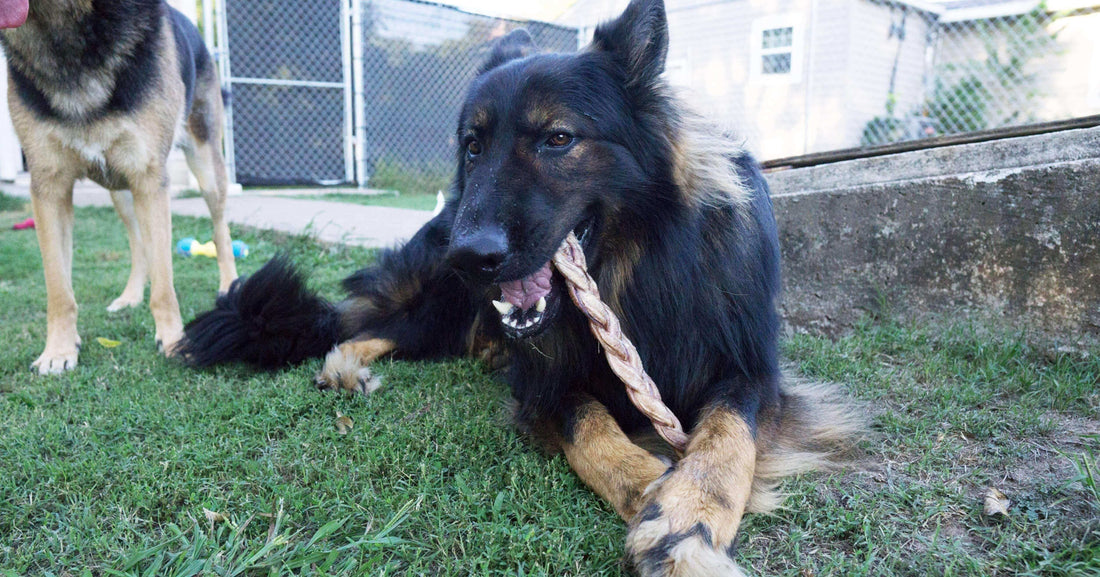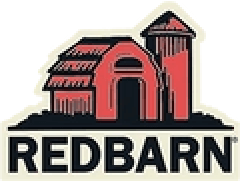
Boredom Busters for Dogs
Our dogs are so visibly excited to see us when we walk through the door, it melts our hearts. There’s nothing better than the sight of our happy pup performing tricks, flips, and crazy eights for us! It’s almost as if they hardly remember being cooped up inside the house all day.
But, have you ever come home to a chewed up sneaker, pillow, or remote control? Idle paws often lead to bad habits and frustrated pet parents!
When pet parents leave dogs alone for the day or miss a few walks due to busy schedules, they’ll often act out and misbehave out of boredom.
Yes, our pets can suffer from boredom just like their parents!
If your dog is bored, acting out or misbehaving, and you’ve admittingly had less time than you’d prefer to walk them, you might find yourself searching for that ‘perfect’ toy to keep them preoccupied for as long as possible.
The problem is, not all dogs love frisbees and tennis balls! Some dogs would instead prefer to chew on your nicely finished furniture or your brand new shoes! Although walks and toys can help combat the pains of puppy boredom, for more active dogs; these options alone might not be sufficient.
So, what can you do if you don’t have time for a walk, and your dog seems uninterested in any toy you choose for them?
Don’t panic! Luckily, many dogs are motivated by food. That’s why durable treats and chews are a great way to keep a rambunctious dog occupied and happy.
Why Dogs Need to Chew
First, let’s get a better understanding of the underlying reasons dogs need to chew.
Our dog’s ancestors developed razor-sharp teeth allowing them to bite through to the center of a bone. Although our domesticated furry friends don’t have the same bone-crushing teeth as wild canines, they still have the instinct. The act of chewing is enjoyable, mentally stimulating, and comforting for most dogs, activating the pleasure centers in their brains. Some dogs never get tired of chewing.
Age may also affect your dogs need to chew. When your dog is a puppy, about four to six months old, their adult teeth start to come in. Chewing can relieve some of the pain and discomfort associated with teething.
Obsessive chewing behavior can also be a sign of anxiety. If your dog usually chews when alone, it may be a way to comfort themselves and help cope with separation anxiety. If you notice an obsessive chewing habit in your dog, consult your veterinarian.
Boredom Busting Chews
While you’re grateful your dog isn’t chewing on your furniture, you may wonder why your dog would prefer to chew on a bone rather than a rubber toy or a ball.
Just like dogs have a preference for the food they eat they also have preferences for objects they chew. But, you can focus your dog’s chewing preferences to chews that are beneficial to them while also providing nutrition at an early age.
On top of being a tasty treat for your dog, bones and hard chews are great for mental stimulation and dental health. The mechanical act of gnawing and chewing gently scrapes plaque from their teeth, massages their gums, and strengthens their jaws as they gnaw.
Did you know? Redbarn has over 200 different treats and chews for your dog!
Picking The Right Chew for Your Dog
There are a few factors to consider when picking the correct chew for your dog.
Age
Puppies should not receive hard chews until all of their puppy teeth are replaced with adult teeth. If you don’t know where to start, it’s safest to start with softer options..
A senior dog, much like a human, can suffer from brittle teeth over time. Keep tabs on your pet’s teeth and avoid hard chews that could potentially cause a crack.
Size
Some small dogs have a big bite! Nevertheless, it’s important to choose the right sized chew for your dog. A good rule of thumb is the whole bone or treat should never be able to fit inside the dog’s mouth. Medium, large and giant breed dogs should have bones that can bear their heavier weight.

Chew Personalities
All dogs are natural chewers. In fact, chewing keeps dogs’ teeth clean, jaws strong, and breath fresh. Each dog has different preferences and chews and gnaws at different rates. When choosing the right boredom-busting treats and chews for your dog, a critical factor is your dog’s chewing style, or “chew personality.” Some dogs will chew on anything and everything, while others chew more selectively.
Redbarn uses three general categories to describe chew personalities light, moderate, and power chewers. These three categories represent how quickly or slowly your dog chews, how often they chew, and how territorial they are when chewing. After you figure out your dogs chew personality, choosing the right chew or treat should be easy!
And what happens when you find the perfect chew for your dog?
Let’s say you’re in store for lots of tail-wagging and grateful panting!
Light Chewers
Light chewers are nibblers who take their time savoring chews. They also tend to lose interest in their chews fairly quickly. Redbarn treats and chews best for Light Chewers include Puff Braids, Roofles, Natural Cow Ears, and Natural Pig Ears.
Moderate Chewers
The most variable chewers, moderate chewers, will either inhale a chew or lose interest in it completely. It usually comes down to how much they like it! Redbarn chews best for Moderate Chewers include Bully Sticks, and Braided Sticks.
Power Chewers
Power chewers are dogs who love to chew on just about anything. They can destroy their chews almost instantly! Redbarn chews best for Power Chewers include our most durable chews, Collagen Chews, Antlers, and Beef Cheek Rolls.
Whether your dog is a light, moderate or power chewer, you can keep their brains stimulated and their mouths busy longer with our boredom-busting chews!
Bully Sticks
One of the most popular boredom busting chews offered by Redbarn is our original Bully Stick. For more than 20 years, Redbarn has been one of the leading manufacturers of Bully Sticks.
If you’re new to bully sticks, the first thing you might be asking is, “What are bully sticks made from?” To put it simply, bully sticks are made from beef pizzle. Pizzle is an all-natural muscle and is very similar to single-ingredient products like beef tendon straps or other all-natural jerkies.
Boredom Busting Bully Shapes
Bully Sticks are great for boredom busting and can satisfy an intense urge to chew, helping your dog steer clear of your belongings. Everyone wins! Your dog can even enjoy an extended chew time with our many different Bully Shapes.
Not only do the shapes provide extended chew time for your dog, but they also help maintain healthy smiles.
Different Bully Stick Shapes Offered by Redbarn:
Barbell
Our Bully Barbell is knotted on both ends. This shape is easy for your dog to hold onto and enjoy as they gnaw, gnaw, gnaw!
Spring
Our Bully Spring is a regular Bully Stick with a twist! We take our meaty Bullies and turn them into spiral shapes for your dog to enjoy a longer chew time.
Ring
Bully Rings are regular Bully Sticks rounded into a circular shape. This unique shape will surely satisfy your dog’s natural urge to chew. Bully Rings are tons of fun for dogs to play with and enjoy.
Braid
The Redbarn Braided Bully Stick is a wonderful, long-lasting chew for dogs. The braided shape helps increase the durability of the chew. Keep your dog occupied for longer with shapes like the braided bully stick.
If you ever have a question about one of our treats or chews, feel free to reach out to our Customer Service department at [email protected] or 1-800-775-3849.
Other Rawhide Free Options
Most inexpensive dog chews are made from durable rawhide; or thick, dried cowhides.
However, if you are concerned about Rawhide because of potential health risks, Redbarn offers several rawhide alternatives for dogs that act as boredom busters due to the extended chew time provided by the density and texture of each easily-digestible chew.
Supervision
Always observe your dogs with new chews. Be aware of potential dangers before they occur. Does your dog try to swallow large pieces whole?
Know when the bone or chew is ‘finished’. This means your dog has reached the last of the bully stick, for example, and needs to be replaced by a new one. Knowing when your bone is ‘finished’ will help you be aware of when to replace your dog’s bone, protecting their health in the process.
———–
Need help picking a chew? We’ve got you covered. Find the perfect pairing for your pup with our product picker tool.




